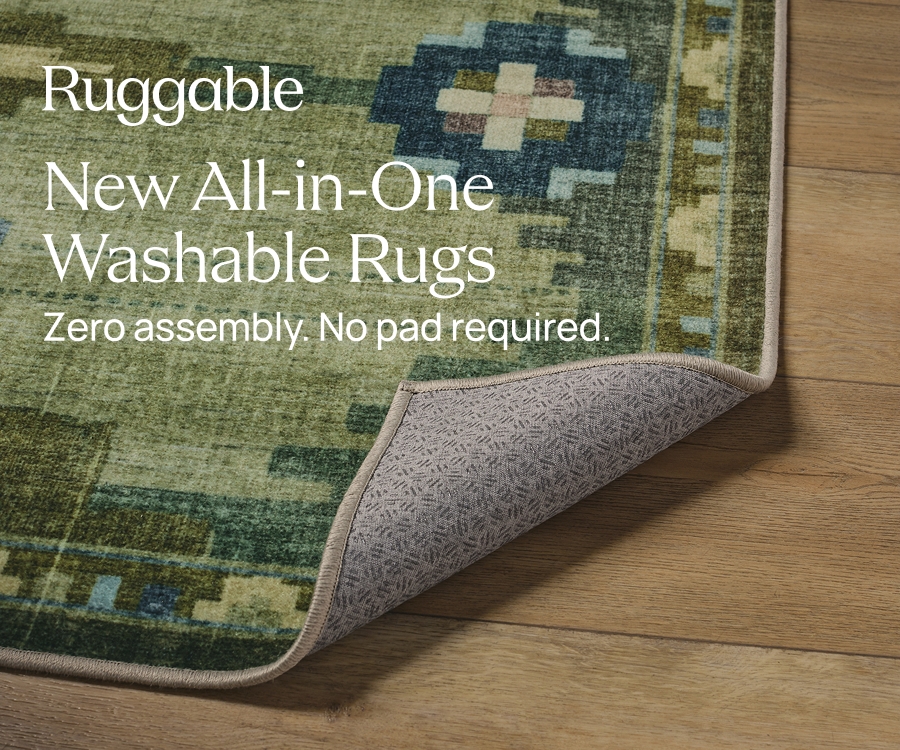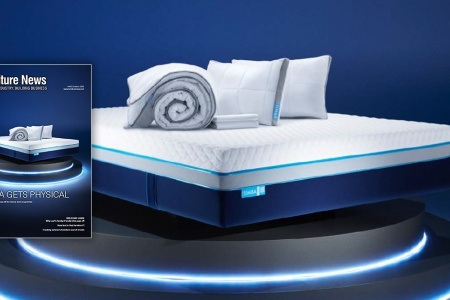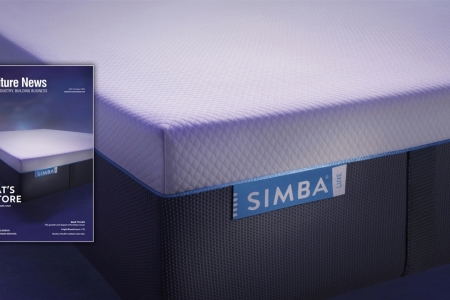Fast furniture – trend-driven buying, or a sustainability headache? From flat-pack living room sets to trendy accent chairs, the modern furniture market is dominated by items that are inexpensive, stylish, and quickly replaced. But how ‘fast’ is fast furniture – and what does it mean for the industry and the environment? PhD candidate in furniture value and longevity, Design Conformity’s Katryn Furmston, explores the problem and its potential solutions …
The speed at which furniture is produced today results from centuries of innovation. The industrial revolution introduced mass production, machinery, and standardised components, while modern technologies like computer-aided design and automated manufacturing have further increased output.
So when we talk about ‘fast furniture’, we’re not really referring to the speed of production. The ‘fast’ in fast furniture is cultural – it’s about how quickly we consume, replace, and discard our furnishings.
Market size and waste concerns
The global furniture industry was valued at over $579b in 2024 (Statista). Despite this economic significance, furniture waste is a growing concern. WRAP reports that the UK alone discards 12 million tonnes of furniture annually, much of it still fit for use.
The sector’s environmental footprint is increasingly scrutinised. While industries like fashion or electronics have gained attention for their disposability, furniture is only now becoming a focal point for sustainability discussions.
What is fast furniture?
First appearing in mainstream media during the 1990s, the term ‘fast furniture’ now describes pieces that are quick and cheap to buy and easy to discard. Common traits include: affordable prices; mass production; trend-driven appeal; short lifespan; and easy to dispose of.
But here’s the twist – the furniture itself isn’t always the issue. Industry insiders often emphasise that ‘fastness’ relates less to how products are manufactured, and more to how they are used. A mass-produced table may last for years if properly cared for – but in reality, many consumers replace it well before it wears out. In other words, fast furniture is as much a cultural construct as it is a manufacturing approach.
Consumer insights
According to Mintel, quality has now overtaken price as the primary factor influencing purchases in the UK furniture market, with 80% of consumers planning to prioritise it over the next 12 months. Price, which was once the dominant consideration, has fallen to fifth place among younger adults aged 25–34, who are among the most active buyers.
Nearly half of UK consumers who bought furniture in the past year did so as a way of self-reward, while over two-thirds are willing to pay extra for high-quality, durable items. Furniture News’ 2024 survey adds that 80% of consumers see value for money as the most important criterion, and 48% plan to keep their furniture for at least five years, highlighting a trend away from disposability.
In terms of brand popularity, the ‘big three’ of UK furniture retail – IKEA, Next and Dunelm – dominate both online and offline visibility. IKEA leads with 3.35 million branded searches per month, while Next and Dunelm maintain strong recognition through their combined high street presence and digital growth.
However, consumer understanding of the term ‘fast furniture’ remains limited. Although more shoppers now prioritise durability and sustainability, few directly associate these values with the fast furniture debate. Instead, brands like IKEA are mainly linked to affordability and convenience rather than disposability, suggesting that even retailers often labelled ‘fast’ continue to benefit from positive consumer perceptions and strong brand loyalty.
Industry perspective
Furniture professionals, meanwhile, resist the label of ‘fast’. Designers and manufacturers often argue that longevity is achievable, but it’s consumer demand for new styles that shortens the lifecycle. Trends now change every one to four years, meaning manufacturers must constantly refresh collections.
As one design report in The Conversation noted, the product doesn’t necessarily fail – the style simply falls out of favour. The cycle of trends, not the manufacturing process, is what compresses furniture’s lifespan. This tension between durability and desirability lies at the heart of the debate. While furniture could last, consumer behaviour makes it ‘fast’.
The psychology of replacement and disposability
Why do we replace perfectly functional furniture? The answers reflect the psychology of fast fashion. Sometimes it’s practical – a broken leg, a wobbly frame. But often, it’s aesthetic – a style that feels ‘dated’, a colour scheme that no longer matches.
Interestingly, many consumers insist they only replace furniture when it breaks. Yet, sales figures and waste data suggest otherwise. The reality may be that we underestimate how often fashion, rather than function, drives replacement. As one sustainability report from the Ellen MacArthur Foundation puts it: “Short-lived consumer goods are rarely about poor quality, they’re about cultural impatience.
A complicated sustainability story
So, is fast furniture inherently ‘bad’? The answer is complex. Not every affordable, mass-produced piece is destined for landfill. Some consumers extend the life of their furniture through care, repair or resale. Others donate or upcycle. But the waste statistics remain daunting. Landfills are filling up with sofas, tables and wardrobes discarded long before their time. And while recycling efforts are in place, the variety of materials (from particleboard to laminates and plastics) makes disassembly and reuse difficult.
The sustainability issue, then, is less about blaming brands and more about changing consumer culture. As WRAP notes, reducing furniture waste depends on rethinking the entire cycle, from design to disposal.
Rethinking value
If fast furniture is characterised by speed and disposability, then rethinking value becomes essential. What if consumers focused more on longevity and repairability? What if design trends prioritised timelessness over novelty? And what if brands made circularity – designing products for reuse, repair and recycling – a default rather than an exception?
Some companies are experimenting, with rental schemes, repair services, and take-back programmes gradually emerging, particularly in Scandinavian and European markets. However, widespread change requires both supply and demand to shift, as consumers need to be willing to invest not just money, but care.
The future – slowing down the cycle
Fast furniture is a cultural and consumer-driven phenomenon. Future industry directions include educating consumers on furniture lifespan and maintenance, exploring regional variations in trend cycles and consumption habits, examining commercial furniture where lifespans are more regulated, and expanding sustainable design practices alongside circular solutions.
The key point? Fast furniture is not a fixed category but a flexible one, shaped by how we buy, use and dispose of items. In a culture obsessed with novelty, slowing down may require more than durable products, it may necessitate a shift in mindset.
Final thought
Our homes are filled with objects that quietly shape our lives. A chair is not just a chair – it’s a seat at the dinner table, a reading nook, a place for conversation. When these pieces become disposable, what does that say about how we value our spaces – and ourselves?
Fast furniture isn't going away any time soon. But as environmental concerns grow, the question isn’t just ‘how fast is fast furniture?’ It’s ‘how long do we want our homes to last?’













